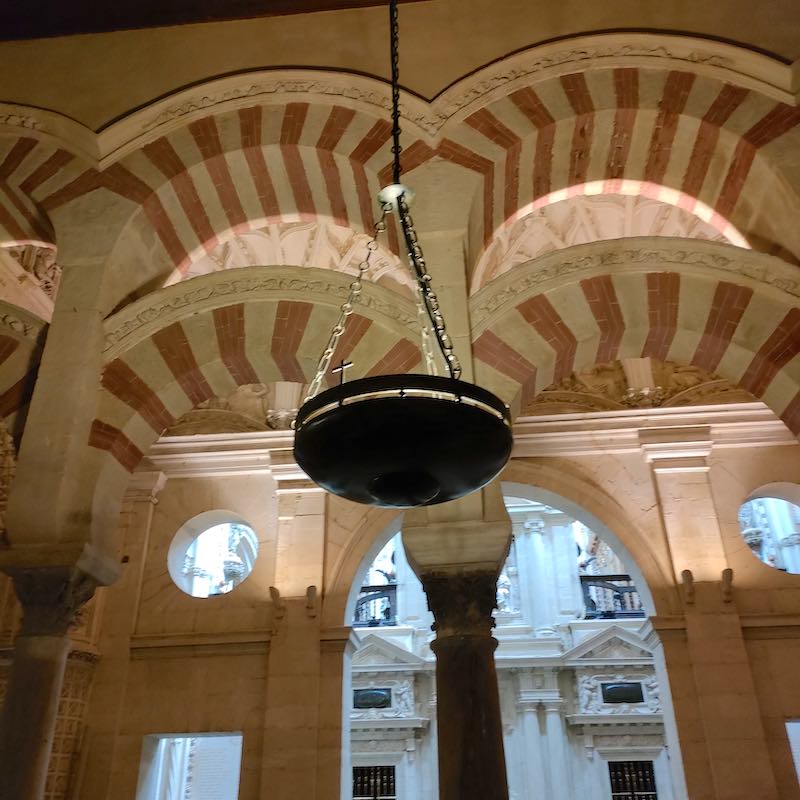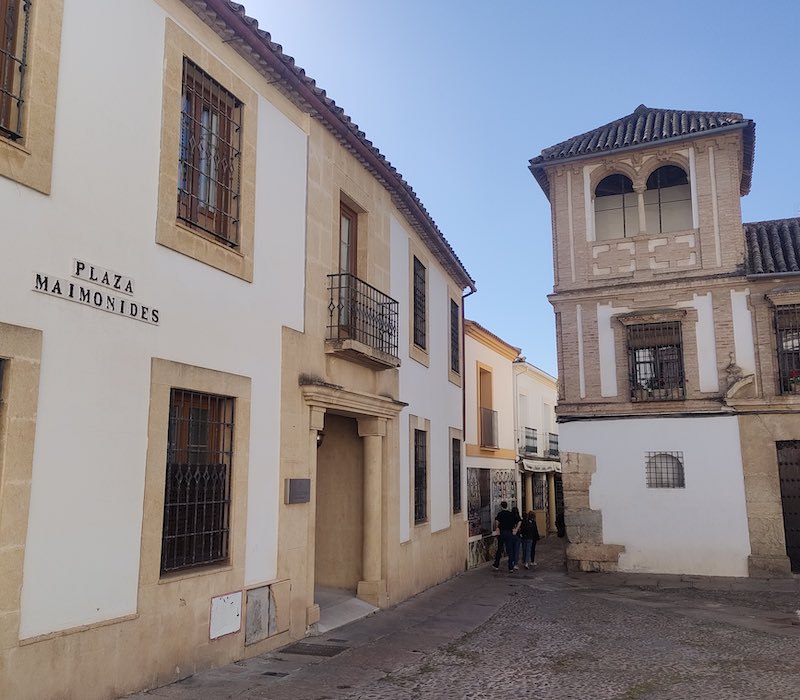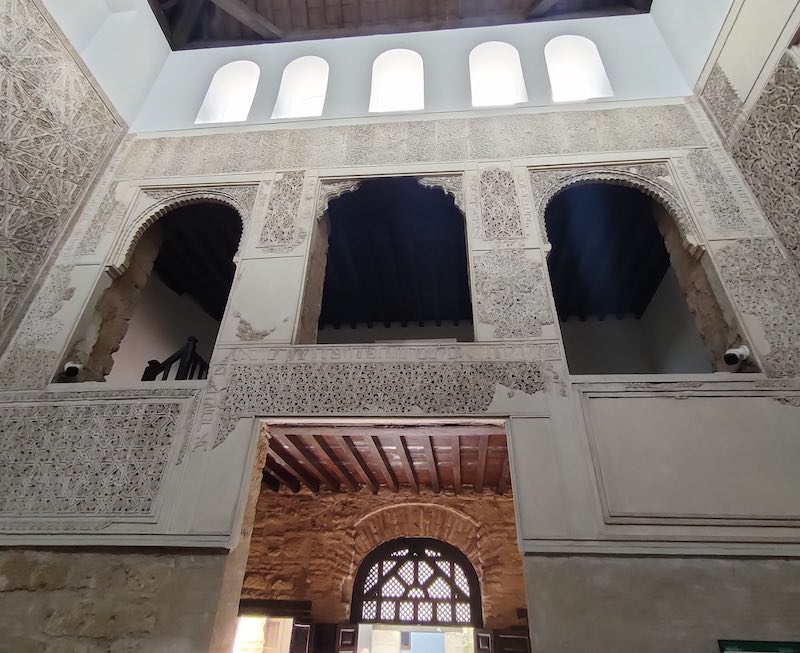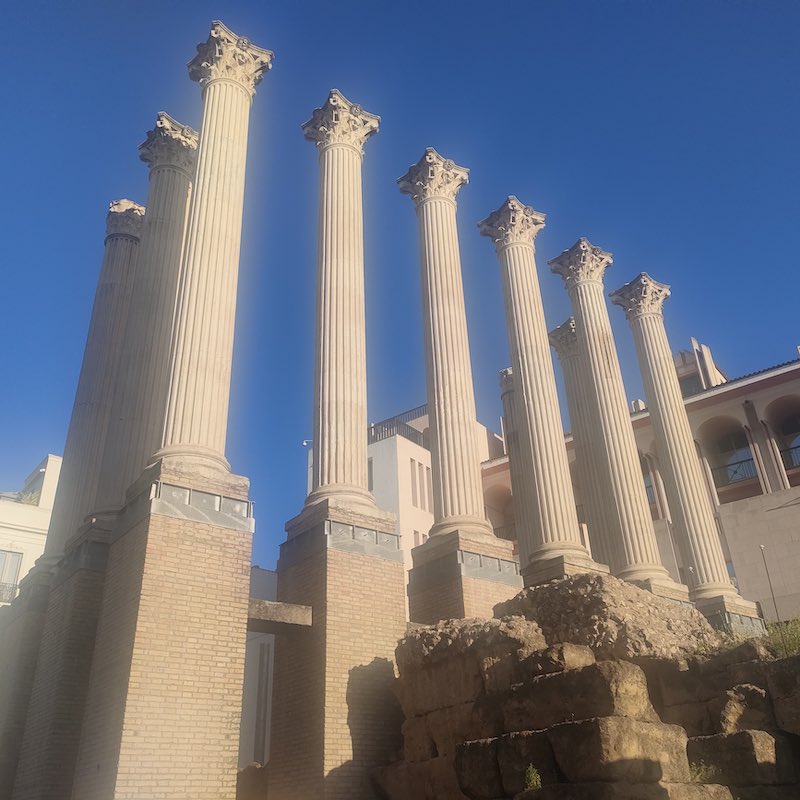Cordoba is one of my favourite places in Andalucia – possibly because it’s home to one of my favourite sites in Southern Spain (The Mezquita). This historic city, located in the southern region of Andalusia, is known for its stunning architecture, rich history, and delicious cuisine. From the impressive Mezquita-Catedral to the charming streets of the Jewish quarter, there’s something for everyone in Cordoba. Join me as I take you on a journey through this enchanting city, discovering hidden gems, sampling traditional tapas, and immersing ourselves in the local culture. Although Cordoba is a great place to spend 2-3 days, it is possible to spend one day in Cordoba and see the main sites. Here’s how…
When to Visit Cordoba
It’s important to consider the time of year that you want to visit Cordoba. In the summer months (July and August) it can be too hot – well over 30 degrees (Celsius), which can get rather uncomfortable. But in the winter it may be too cold – less than 10 degrees (Celsius) and so you should also avoid December and January.
The next thing you should consider is whether you want to be in Cordoba during Holy Week (Easter). Easter is a big celebration in Spain (Semana Santa) and the streets will be filled with numerous processions of religious floats and parades by religious brotherhoods. It can be a really fantastic thing to see, especially if you are interested in religious festivals. However, Semana Santa is a very busy time of year in Cordoba and sometimes it’s even difficult to get down some of the streets. Many shops/sites are closed on Good Friday and Easter Sunday. Walking tours can also get cancelled or diverted. So although Easter has good weather in Cordoba, you need to think about whether Holy Week in Spain will be for you!
I would say that the best time to visit Cordoba is May or June when it is warm but not too hot and doesn’t coincide with any of the Easter festivals. However, one festival that you may want to plan to be in Cordoba for is the Cordoba Patio Festival which usually takes place around the start of May. The streets and patios are beautifully lined with plants and flowers in celebration of the city.
Is Cordoba Worth Visiting?
Cordoba is absolutely worth visit, even if you only have one day to see it. Cordoba is home to two really important sites – the Mezquita (Mosque Cathedral) which is one of Spain’s best examples of Moorish architecture and the Alcázar de los Reyes Cristianos. Alcázar de los Reyes Cristianos is the residence of the Christian monarchs and contains some of Spain’s most beautiful gardens. These are the best things to do in Cordoba and I would not miss Cordoba based on these two sites alone!

I also really loved walking through the picturesque streets of the Jewish Quarter. There is also a 14th Century Synagogue which is just one of three Moorish Synagogues left in Spain.
If you really wanted to, you could see Cordoba as a day trip from Seville or Grenada, but I’m glad that I stayed overnight!
Planning your day in Cordoba – Getting there and away
Most people do Cordoba as a day trip from Seville, but with the travel included, this can be pretty intense. I would recommend that you only really do it this way as part of a guided tour. If you plan to see Cordoba in one day, book a nice place to stay near the Mezquita (I stayed at Hotel Marisa which was a lovely boutique hotel) and get up early to make the most of Cordoba in a day. You can end your day in Cordoba at the train station ready to head off to your next destination such as Grenada, Jaen or Seville.
If you are travelling into Cordoba by train and want to save time when you arrive, jump in a taxi from Cordoba station to the Mezquita, but it is only around a 20 minute walk.
An important thing to note is that you book the big sites in advance so that you definitely get to see them and that the timing is right (very important if you only have one day to spend). A tip is to avoid visiting Cordoba on Mondays because all the main site seeing tends to close for staff to have a day off. Saturday is a great day to visit because you can get into the Mezquita for free between 8.30am-9.30am on Saturdays (I wish I’d know this before buying a ticket haha!) Remember to time your Alcazar ticket to be right after the Mosque. As you need at least an hour in the Mezquita then if you see that at 8.30am you would need to book your Alcazar entrance for say 10am.

What to Pack for one day in Cordoba
- Comfortable trainers or walking boots with walking socks – there will be a lot of walking for this one!
- A water bottle – it gets hot in the spring and summer months and you don’t want to dehydrate.
- Sunhat and sun cream – protect yourself from the suns rays.
- Clothes that are comfortable and conservative – you want to avoid showing too much leg or shoulders (or boobage!) because the Mosque/Cathedral is a religious building.
- A padlock – many hostels in Spain have lockable under the bed storage but you need to bring your own padlock for these (some hostels sell them at a very inflated price!)
- Guide Book – I recommend the Lonely Planet Andalucia Guide for Cordoba and the surrounding towns and cities in the region.
Top Tips for One Day in Cordoba
- Stay overnight on a Friday night and wake up at 8am to see the Mezquita for free!
- Stay in a hotel near the Mezquita such as Hotel Marisa.
- Wear sunscreen and a hot as it can get very hot in this part of Spain.
- Wear comfortable walking boots or trainers.
- Pre-book your Alcazar Tickets online here for around 10am or 10.30am.
- Have lunch in a tapas restaurant in La Judería (Jewish Quarter in Cordoba)
- See Madinat Al Zahra on a separate day as a trip in its own right – you won’t enjoy it if you cram too much in (see below paragraph for more on this).
Should I include Madinat Al Zahra on my One Day Cordoba Itinerary?
Don’t try to pack in a trip to Madinat Al Zahra (ancient Moorish city) on the same day as the main sites of Cordoba – it will probably be too much. You will feel rushed and not enjoy it, or worse end up with sun stroke! I would recommend that you do the main sites of Cordoba as one day and then visit Madinat AL Zahra the following morning. You can then move on to a different city such as Granada on the afternoon of your second Cordoba day.
If you are desperate to see the main sites of Cordoba and Madinat Al Zahra in one day then limit your sight seeing to the Mezquita, Alcazar of Cordoba and Madinat Al Zahra only. Wear a sun hat and plenty of sun screen as it will be a long and hot day. I would not advise doing this as an itinerary in the summer months (only the shoulder seasons). Also if you want to do all three of these in one day then it is best to book as a tour or hire a guide. You won’t really have time to navigate the public transport between Cordoba and Madinat Al Zahra.
One day in Cordoba – A Self Guided Walking Itinerary
Sure, here’s a suggested itinerary for one day in Cordoba, Spain:
8.00am Cross the Roman Bridge (Puente Romano) and visit Torre de la Calahorra
The Roman Bridge in Cordoba, also known as “Puente Romano,” is one of the most iconic landmarks in the city. This ancient bridge spans the Guadalquivir River and connects the historic center of Cordoba with the Calahorra Tower on the other side of the river.
The Roman Bridge was originally built in the 1st century BC by the Romans to improve trade and communication routes in the region. However, the bridge has undergone several reconstructions over the centuries, including in the 10th century by the Moors and in the 18th century by the Spanish.
One of the most interesting features of the Roman Bridge is the statue of San Rafael, located on the Calahorra Tower end of the bridge. This statue was erected in 1651 and represents the archangel Rafael, who is said to protect the city.
8.30-9:30am – Visit the Mezquita-Catedral de Cordoba
The Mezquita of Cordoba is one of the most impressive buildings in Spain. In fact, it is considered one of the most important examples of Islamic architecture in the world and a symbol of the city of Cordoba itself. This stunning mosque-cathedral was built in the 8th century and features a unique blend of Islamic and Christian architectural styles. You will need to spend at least one hour here, possibly one hour and a half to explore the interior, the chapels and the gardens.
The Mezquita was originally built in the 8th century as a mosque by the Muslim ruler Abd al-Rahman I, and over the centuries it was expanded and modified by successive rulers. The building underwent significant changes after the Christian conquest of Cordoba in the 13th century, when it was converted into a Catholic cathedral.
The Mezquita features a unique architectural style that blends Islamic, Christian, and Gothic elements. Its most striking feature is the vast prayer hall, which is supported by more than 850 columns made of jasper, marble, and granite. The horseshoe-shaped arches and intricate geometric patterns on the walls and ceilings reflect the Islamic influence on the building’s design.
In addition to the prayer hall, the Mezquita also includes a courtyard, a minaret, and a Christian chapel. The chapel, known as the Capilla Mayor, is located at the centre of the building and features a stunning altarpiece and a Baroque dome. The Mezquita a UNESCO World Heritage Site.
Travel tip – there is a free entrance to the Mosque Monday to Saturday, from 8.30am to 9.30am (although no audio guides are available it is less crowded as many tourists come for the day and arrive later)
10:30am – Alcázar de los Reyes Cristianos
Next, head to the Alcázar de los Reyes Cristianos, a medieval fortress and palace that was once the residence of Christian monarchs. It was built in the 14th century on the site of an earlier Moorish castle, and served as the residence of the Christian monarchs during their visits to the city.
The Alcazar is famous for its beautiful gardens, which are considered some of the most impressive in Spain. The gardens are a mix of different styles, including Renaissance, Gothic, and Islamic, and feature fountains, pools, and intricate flower beds. One of the most popular features of the gardens is the large pond, which is said to have been used by the monarchs for naval battles and mock sea battles.
The Alcazar also has a number of impressive buildings, including the Palace of the Inquisition, which was used as a prison during the Spanish Inquisition, and the Gothic-style chapel, which features beautiful stained glass windows.
Explore the stunning gardens and fountains, and don’t miss the stunning views from the tower.
12:30am – Judería – The Historic Jewish Quarter
After touring the Mezquita, take a walk through the charming streets of the historic Jewish quarter, or Judería, and admire the beautiful whitewashed houses and colorful flower-filled patios.

In the Jewish quarter, don’t miss the 14th Century Synagogue – it’s free to enter and really interesting. This is one of only 3 of its kind left in Spain (the other two are in Toledo). Other notable sites in the Jewish Quarter include the statue of Maimonides, The Bull fighting Museum (not for me!) and Casa de Safarad a museum of Jewish heritage). If you want a more in depth guide to the Jewish Quarter in Cordoba click here.

1:30pm – Lunch Time!
For lunch, head to one of Cordoba’s famous tapas bars, like Bodegas Mezquita, Taberna El Capricho or Casa Pepe de la Judería, where you can sample a variety of local dishes like salmorejo (a cold soup made with tomatoes and bread) and berenjenas fritas (fried eggplant). I ate at Bodegas Mezquita and loved the Oxtail Croquettas. I’d advise taking a long long or even a siesta at this point, because Cordoba can be unbearable in the mid day heat, especially in the summer months.

2:30pm – Plaza de la Corredera
In the afternoon you can walk to the Northern part of the city and visit the most famous square in Cordoba – Plaza de la Corredera. The square dates back to the 17th century and was built in a Baroque style, with a rectangular shape and arcaded buildings surrounding it on all sides.

The plaza has been used for a variety of purposes throughout its history, including as a bullring, a market, and a venue for public executions. Today, it is a popular gathering place for locals and tourists alike, with numerous cafes, bars, and restaurants lining the arcades.
3:00pm Templo Romano
Next to the square you will find some Roman ruins of what used to be a Roman temple. It was built in the 1st century AD during the rule of Emperor Claudius, and is one of the few remaining Roman ruins in the city.

The temple was originally part of a larger complex that included a forum, basilica, and other public buildings. The temple itself was dedicated to the Roman imperial cult and likely served as a central gathering place for the city’s elite.
Over the centuries, the temple underwent numerous transformations and was even used as a Christian church during the Middle Ages. It was later converted into a storehouse and then a prison before being rediscovered and restored in the 1950s.
Today, visitors can see the remains of the temple’s original columns, which still stand at a height of over 9 meters (30 feet). There are also several smaller artifacts on display, including fragments of Roman mosaics and sculptures (all free of charge as it’s just in the centre of the city).
3.30pm – Palacio de Viana
Next, take a stroll through the beautiful gardens of the Palacio de Viana, a 15th-century palace with 12 stunning courtyards filled with flowers, fountains, and sculptures. You will need to spend at least one hour here to thoroughly enjoy the patios adorned with beautiful flowers.
The palace was built in the 14th century and was originally the residence of the Marquises of Viana. It has since been converted into a museum that showcases the art, history, and culture of Cordoba. It is made up of 12 courtyards, each with its own unique character and design. The courtyards are filled with fountains, sculptures, and beautiful gardens, and are a testament to the Andalusian architectural style. The palace is also home to a collection of art and historical artifacts, including ceramics, furniture, and paintings, which reflect the different periods of the palace’s history.
One of the most popular features of the palace is the “Patio de los Naranjos,” or “Courtyard of the Orange Trees,” which is filled with fragrant orange trees and a central fountain. This courtyard is often used for cultural events and concerts.
If you love the beautiful flowery patios then it might be a good idea for you to visit Cordoba in May, which is when they have the Cordoba Patio festival. The Patio Festival is a tradition that began in 1918 and was reintroduced in the 1950s after the Spanish civil war. You can get a map of all of the beautiful patios in the city that will put on a fabulous display – all of which are walkable.
5pm – Roman Amphitheatre (if available)
If time allows, head to take a peak at the Roman Amphitheatre. Note that this is quite close to the train station and so if you plan onward travel by train, see the Amphitheatre last of all.
The amphitheatre of Cordoba was built in the 1st century AD during the reign of Emperor Augustus, and was used for various public events, including gladiator battles and theatrical performances. It was situated outside the city walls, near the Guadalquivir River, and could accommodate up to 15,000 spectators. It was constructed on a natural slope, which allowed for optimal viewing of the performances, and was built using local stone and brick. Unfortunately, there is not much left to see, and they are currently restoring it so double check if it is open at your time of visiting.
7:00pm – Dinner at one of Cordoba’s best Restaurants
If you are lucky enough to be able to stay for dinner, head to La Taberna del Río or El Churrasco, two of the city’s best restaurants, where you can enjoy traditional Cordoban dishes like rabo de toro (Oxtail stew) and flamenquín (a fried pork dish).
There you have it! This itinerary should give you a good taste of Cordoba’s rich history, stunning architecture, and delicious cuisine – the perfect day in Cordoba!

